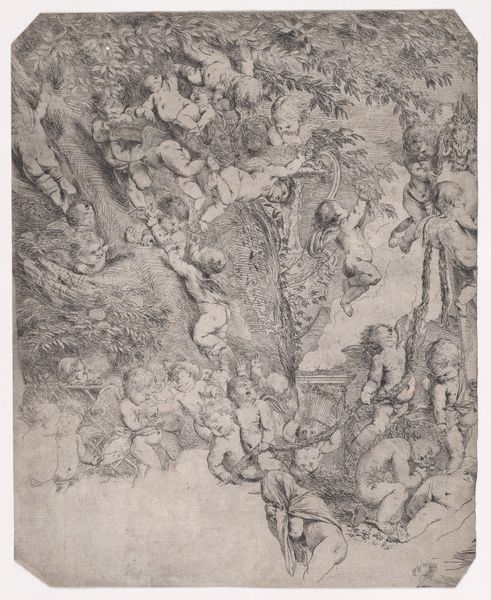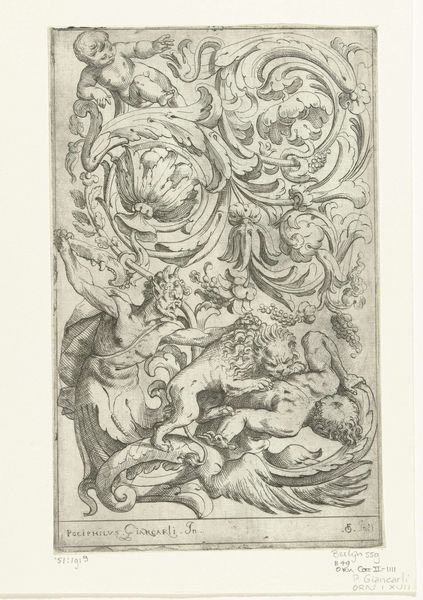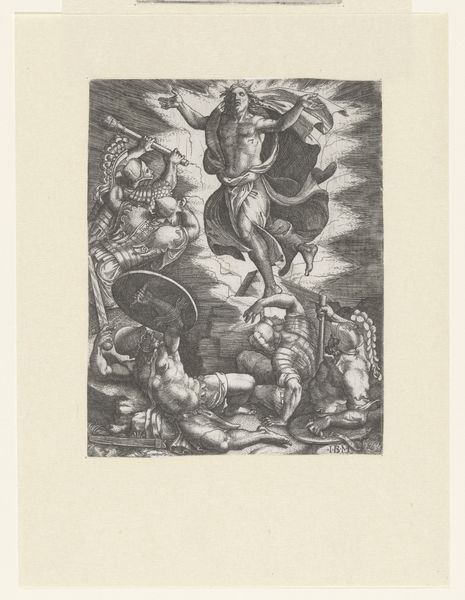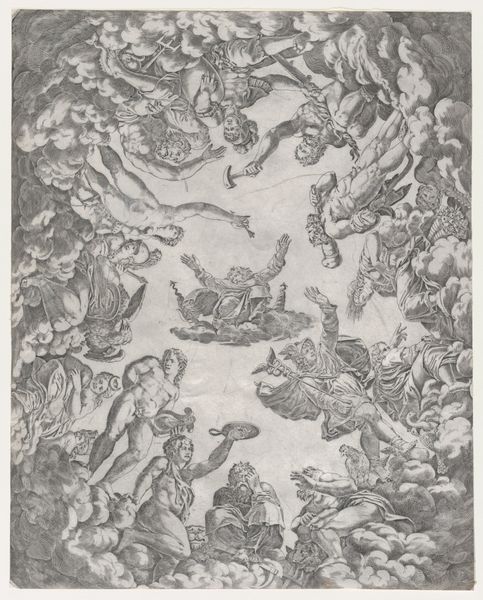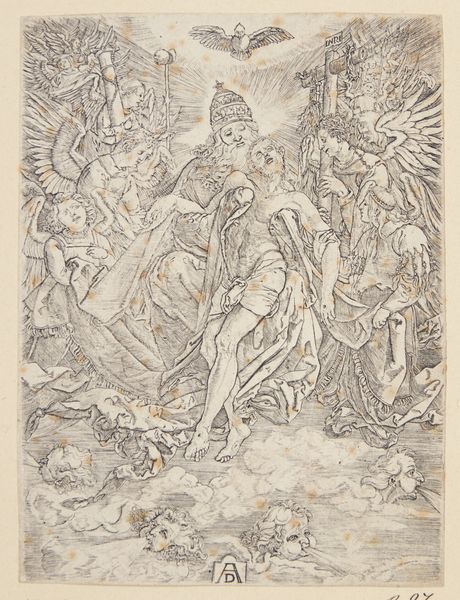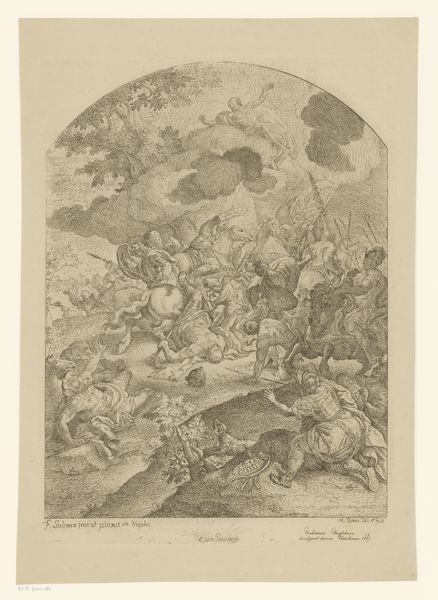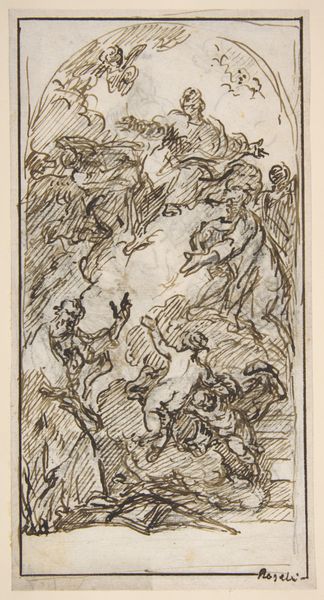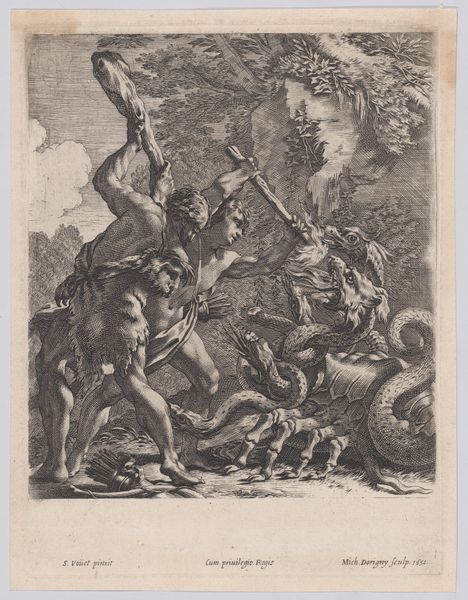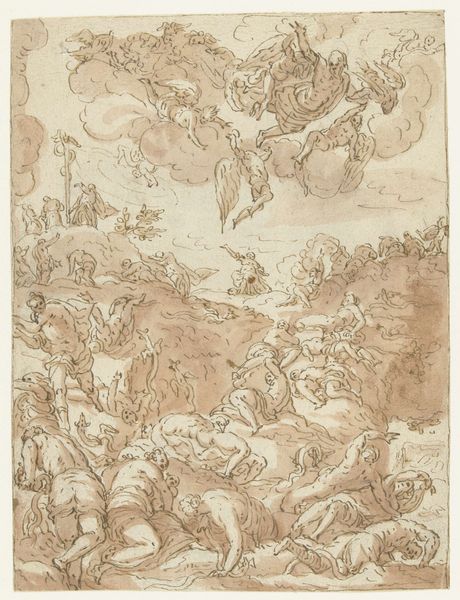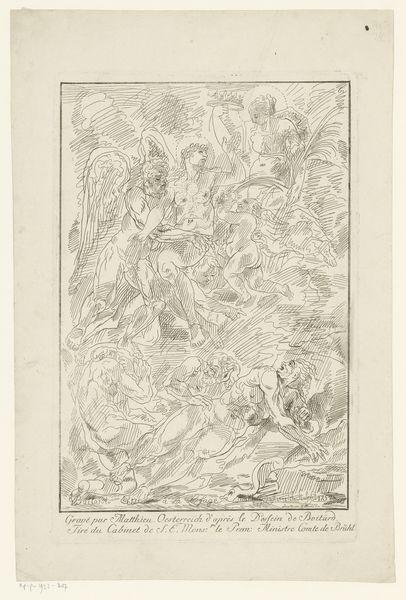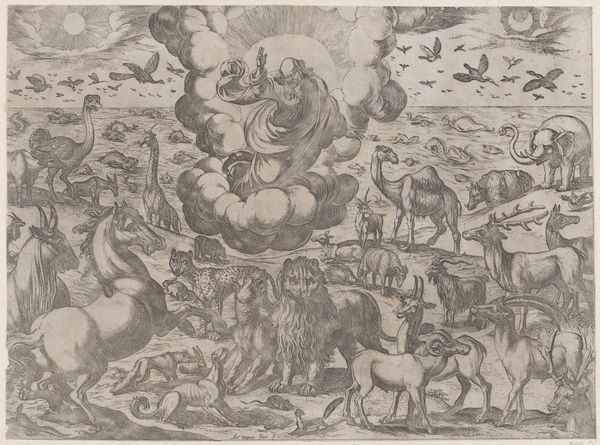
Dimensions: height 223 mm, width 149 mm
Copyright: Rijks Museum: Open Domain
Curator: Looking at this piece, I am immediately struck by its turbulent energy. It's a maelstrom of figures and textures. Editor: This engraving, known as "Jupiter calming the storm at sea," dates back to between 1515 and 1566, though its creator remains anonymous. We are fortunate to have it here at the Rijksmuseum. Consider the era's societal and political turmoil reflected in this tempestuous scene. Curator: The symbolism is overt, but powerful: Jupiter, god of the sky, amidst the churning chaos of the sea. Those horses emerging from the waves–surely emblems of brute power and the unbridled forces of nature? The faces of the putti or cherubs looming in the sky… ominous or benign? It's a visual language speaking to control, or perhaps the limits of control. Editor: Yes, I find it telling that even divine intervention appears less about pure beneficence and more about the assertion of dominance. The gendered and power dynamics within classical mythology invite critical exploration, particularly within patriarchal societies. Does this reinforce those power structures or subtly question them by highlighting the fragility of order? Curator: That's a keen point. One could argue the composition itself, so densely packed and fraught with action, speaks to a fear of chaos barely held in check. Consider also that in some cultural memory, the sea represents the subconscious—untamed emotion—a challenge to patriarchal control over female domains, perhaps. Editor: Absolutely, and let's not forget the print medium itself. The relative accessibility of prints at the time meant these mythological narratives could reach a wider audience, influencing the prevailing understanding of power and authority across various social strata. One might see it as very early propaganda. Curator: Seeing how different meanings can emerge through different contexts and perspectives is enlightening. Editor: It truly underlines the importance of engaging with art beyond just aesthetics. Every mark, every figure, carries layers of history and ideology ready for us to unpack.
Comments
No comments
Be the first to comment and join the conversation on the ultimate creative platform.
